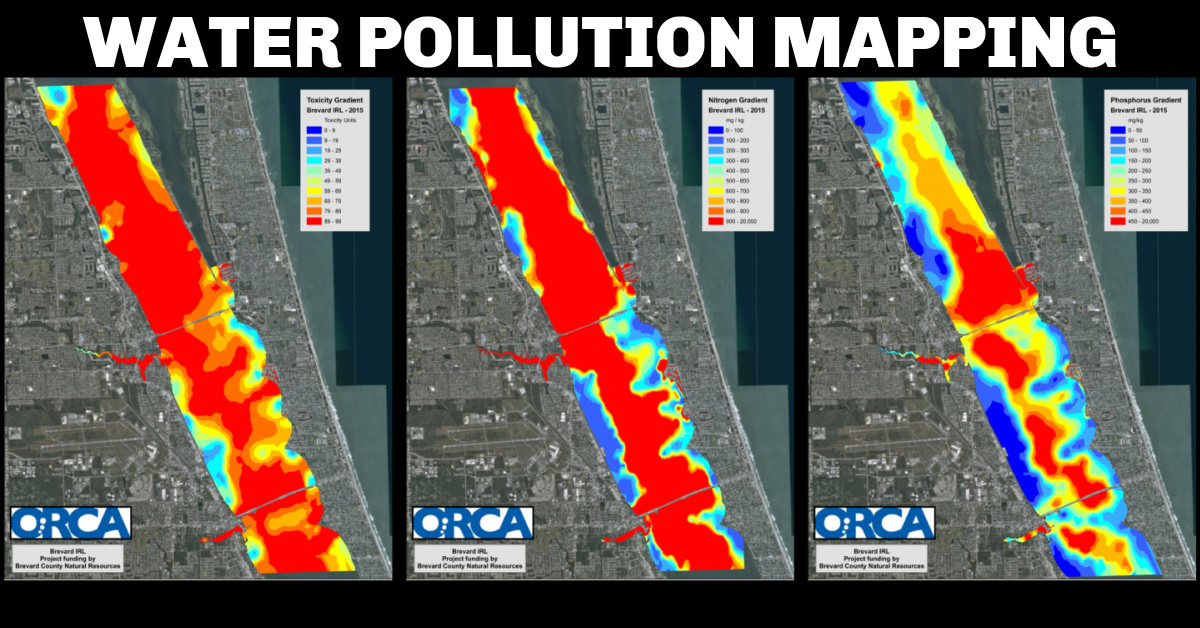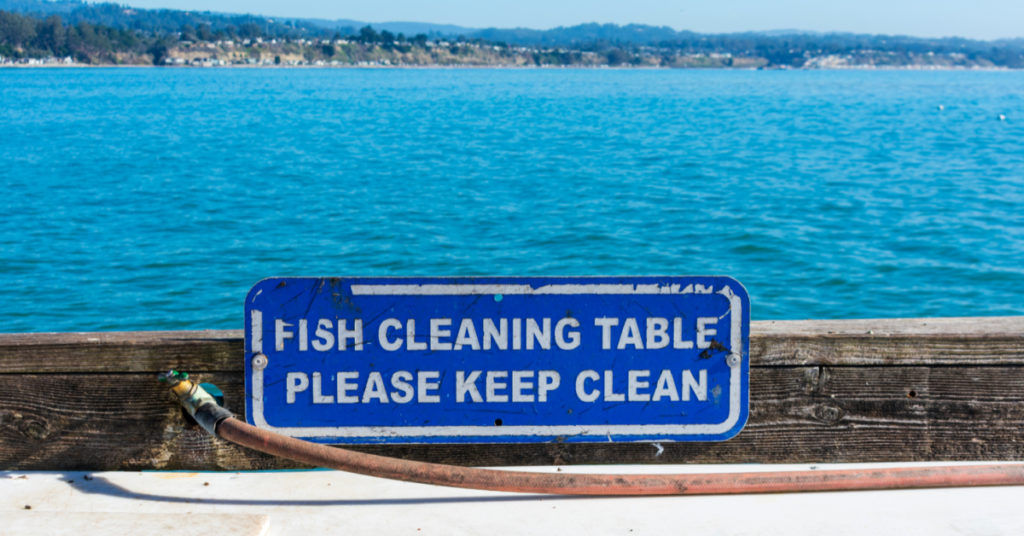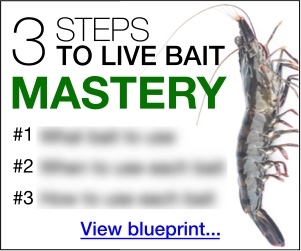Using Pollution Mapping To Save The Indian River Lagoon
- By: Joseph Simonds
- on

Do you know scientists have been using pollution mapping to save Indian River Lagoon?
What is the impact of pollutants from fertilizers and runoff from plants on the Indian River Lagoon?
What can we do to repair the lagoon and solve this issue?
ORCA is the Ocean Research and Conservation Association dedicated to repairing underwater ecosystems impacted by toxins and other contaminants.
How can we make an instant impact today?
Listen in to this episode as we discuss ORCA’s mission to save the Indian River Lagoon with ORCA CEO and Senior Scientist Dr. Edie Widder, PH. D., and Research Associate Bridget Gerovac!!!
Also, please take a few moments to fill out this SURVEY to benefit ORCA’s efforts to save the Indian River Lagoon!
You can watch the video version of this podcast below (which I highly recommend), listen to the audio version by clicking the play button underneath it, or listen to it on iTunes, Stitcher, or Spotify.
P.S. Don’t forget to subscribe on iTunes, Stitcher, or Spotify and leave us a review!
Check it all out below!!!

Saving The Indian River Lagoon [PODCAST]
Note: Don’t forget to subscribe to the Salt Strong podcast on iTunes, Stitcher, or Spotify and leave us a review!

Related Podcasts:
- THE FUTURE OF RECREATIONAL BOATING & FISHING
- WHAT IF YOU THREW BACK 100% OF THE FISH YOU CAUGHT FOR A YEAR?
We covered a lot in this episode, so here is a timestamped version:
- 3:15 – What is ‘ORCA‘?
- 5:06 – What is the goal of ORCA?
- 6:01 – Trying to find solutions
- 6:29 – Pollution Mapping
- 9:55 – Replanted shorelines
- 12:31 – ‘Black mayonnaise’ or lagoon muck
- 14:35 – Education and Citizen Science
- 15:19 – Citizen Science Projects
- 16:09 – What is a “Kilroy”?
- 19:53 – Living Shorelines
- 21:21 – Breakwaters
- 21:43 – The Ultimate Goal of ORCA
- 23:01 – Preliminary data
- 24:29 – How do we remove the ‘muck’?
- 26:22 – Dredging the muck
- 26:51 – Algae contaminants and impact on fishing
- 28:02 – Specific toxins as a result of muck build-up
- 29:45 – Would you eat fish caught from the Indian River Lagoon?
- 34:17 – Why is ORCA interested in anglers fishing the Indian River Lagoon?
- 34:54 – ORCA SURVEY
- 35:17 – How else can anglers volunteer or help the cause?
- 37:09 – Pollution Mapping availability
- 37:35 – Offshore trolling evidence
- 40:44 – Undersea garden destruction
- 42:33 – Specific species of fish and locations ORCA needs for research
- 44:12 – ORCA upcoming events
Saving The Indian River Lagoon [VIDEO]


Conclusion

There are no short-term solutions to long-term issues in terms of conservation and saving our fisheries.
We are all polluters and there are ways we can collectively respond to prevent further pollution and begin to repair ecosystems that are being harmed.
The Indian River Lagoon is a prime example of an ecosystem that we can collectively make an effort to repair and rebuild if we increase education and citizen involvement!
Do you have any more questions on ORCA or on their project using pollution mapping to save Indian River Lagoon?
Let us know down in the comments!
If you want to learn more about ORCA, check their website out HERE!
You can also learn more about ORCA’s efforts on their social media channels (@TeamORCA on Facebook).
And if you know an angler who wants to learn more about pollution mapping to save the Indian River Lagoon, please TAG or SHARE this with them!
P.S. Want access to our best fishing spots and tips, plus discounts to our online tackle store? Click here to join us in the Insider Club!
Related Articles:
Related categories:
STOP WASTING TIME ON THE WATER!
Do what the “SMART ANGLERS” are doing and join the Insider Club.
Here’s what you’ll receive today when you join:
- Weekly fishing reports and TRENDS revealing exactly where you should fish every trip
- Weekly “spot dissection” videos that walk you through all the best spots in your area
- Exclusive fishing tips from the PROS you can’t find anywhere else
- Everything you need to start catching fish more consistently (regardless if you fish out of a boat, kayak, or land).













Very informative and as a soon to be new resident of a water front property with a sloping lawn, I know a top priority will be to create a natural buffer to stop any runoff of clippings and fertilizers. Every little bit helps.
thanks again and please keep this type of critical information coming.
heck you thinks that’s bad , mobile bay in alabama makes it look clean!
Fantastic program! I retired three years ago to Titusville from up north, so I fish the north IRL. It’s sad to see the water conditions. I hear about to “good old days” but it sounds like I will never see them. How sad. I am happy to see that someone is concerned. THANKS for the information.
Excellent program and appreciate the commitment. Will certainly support your efforts.
I also support Captains for Clean water, such as their campaign yesterday (Feb 8, 2022) to oppose SB2508 which will set back recent progress on the EAA reservoir and LOSOM. They have a great political action process to let our representatives know the fishing community’s position on these issues. Perhaps we could have, or still have, our voices heard on the bottom drag netting killing the fin fish nurseries.
Are Salt Strong and ORCA collaborating with them, given your parallel efforts?
I was part of a group of kayak anglers who supported this effort last fall. We launched from Bear Point Sanctuary on the IRL just south of the Fort Pierce inlet. The group was to keep our legal catches, targeting game fish species. As a group, we fished 5 hours that morning and had very little to share with the researcher at the end… a few Jacks, an unexpected Pompano and few others – but no trout, redfish, snapper, etc.
To me, the fact you could have roughly 10 kayak anglers in a pretty good location an pretty good conditions for 5 hours or more and have nothing says a lot to me about the water. The FISH don’t want to be in it!
I’ve lived in this area (Stuart) for almost 2 years and struggle to find fish with any consistency. Yes, there is no grass to be found here, it’s all mud & sand. It’s taken a lot of fun out of kayak fishing for me and super frustrating. Often I find myself targeting ladyfish and throwing them back out as bait for sharks – just for the thrill of having something on the line again. I’m thinking I’ll need to ditch kayak fishing for inshore gamefish in this area and plan trips north (space coast) or south (everglades) or to the west coast (crystal river) for that fun.
Pretty much agree w/ all you wrote above, esp the incredibly bad ratio man-hours fishing to desirables-caught … and your deductions taken from that. It was that way for me years ago, too, and only worse now. I’m pretty sure I’m not THAT BAD an angler. LOL Well, maybe I am. One of my trips to the Lagoon (Nov) – saw a manatee lumbering past my yak. Looked more like a Ghillie suit (I’m serious) than something I could recognize. “Another goner.” That dying sea cow was the only thing I saw that trip. Pitiful. And this was a sector some few-years before that had grass and provided a bounty of catches, top slot reds, etc. It was bread-butter grounds for me. My laments here, nothing new for us, much smarter people than me and tourney guys have said same, for years now. We gotta start really doing something. Mobilize, etc. Joe S comments on another thread – about the stove-pipe mentality of all the groups working on their solutions…a key point. Those divisions, an achilles heel for us. :-/
The lawn nutrient reduction program surely could go a long way in helping to reduce some of the issues. In conjunction though, some form of tidal flow needs to be introduced to help flush the system. They know how to do it…
Here’s an excerpt from an article in Florida Today, 2015 discussing potential model fixes:
•Either a narrow tidal inlet or pumping station in the southern Mosquito Lagoon produced complete flushing of the Mosquito Lagoon and the northern Indian River Lagoon within about 70 days or less.
•A tidal inlet just north of Patrick Air Force Base also substantially improved flushing of the Banana River.
Everyone simply needs to get together as one voice and demand action. It just takes one person to step up, take the lead and GET IT DONE! Stop with the finding reasons not to do it and work to bring the Lagoon back to life.
That was very interesting. Sounds like their mission is legit and they have a sincere interest in cleaning up the lagoon. A big focus of theirs was to slow down the runoff of water but I haven’t heard what they propose to slow it down other than planting certain plants near the shoreline. I’m going to look into donating some fish to local bait shops if they will support ORCA.
I found their site kinda balky, but thankfully SS had some hot links to key sections, and I used those from SS. Their pollution mapping – a highlight they tout – showed high pollution levels around most residential canals…but not at one development’s canals where they had intentionally built in those buffering zones to contain lawn runoff and the like. So that’s their proof in the pudding. And it’s a relatively-economical fix, versus inlet construction.
As I understand, Lake Apopka is/has-gotten better due to a filtration plant built on the north end, with water being continuously recycled up there. So an inlet – or just pumping station, circulating out Lagoon water and in ocean water – might do some of the same? Or maybe spread lagoon’s detrimental pollution elsewhere? How will residents on the beach feel, humans and water-life?
Maybe no great easy answers.
Still like Dr Edie’s idea of the buffering. Can be done now, with relatively little fanfare and hoopla, it might seem to appear.
Excellent presentation. Thanks for this much-needed psa. Probably speaks to a lot of stuff that most local anglers throughout the IRL System would rather not want to hear. The part about the ‘muck’ (black mayo) — I don’t think that’s news. Heard about that and its deleterious effects many years ago, with the ‘forever chemicals’ supposedly traced to aerospace, industry, etc. [dunno how valid, but certainly believable] A main reason why I’ve shifted my angling focus mostly elsewhere is that toxic mayo, and it’s certainly THE PRIME reason I release my legal reds (well, everything) there when I’m lucky enough to get em. “As much as I like blackened [red]fish tacos, I’ll pass today.” Maybe I need to start turning them over to the ORCA lab instead. Already contacted the site, will be doing something with them in some meager capacity (as I’m not right in their neighborhood).
The team represented there was saying the right things, based on what I think I understand about environmental systems engineering and such. There are some affordable, short+long-term solutions that can be implemented ratt now, and yield immediate and more-lasting positive results. Targeted, science-based sensible efforts better than political eye-wash, where $ is thrown at a problem to satisfy a few restless residents.
And the fisheries, NOAA thing. [shaking head] LIke a lot of things, sadly, follow-the-money. All of us citizens should be demanding/getting ‘better’ (and being informed!), not just the few of us. Yeah, Justin, Joe, my eyebrows went up, too.
This is OUR cup of tea, folks.
OK, I’ll shut-up. Sorry.
Wow what an eye opener. I hope our saltstrong community can pull together help these fantastic people and there efforts to help protect what we as avid anglers love most.